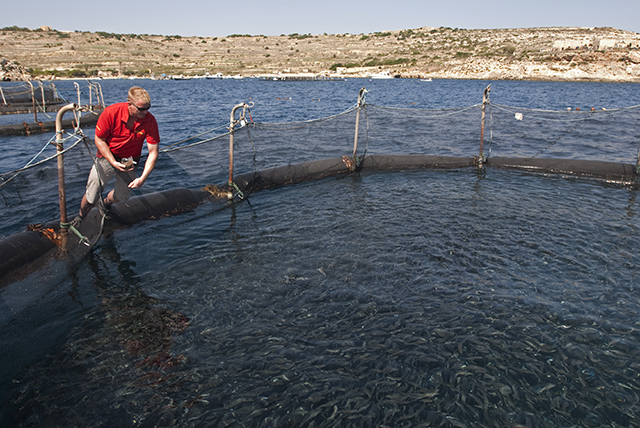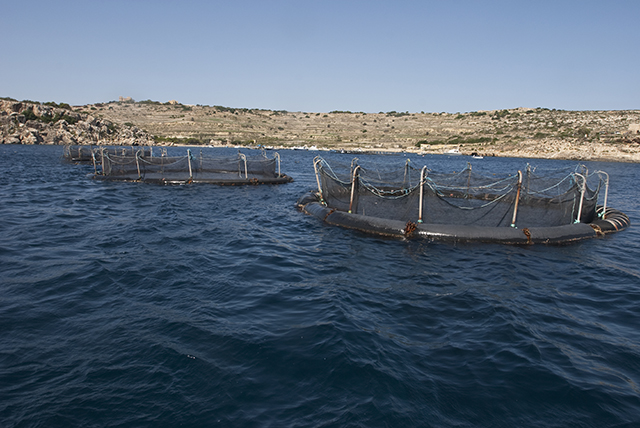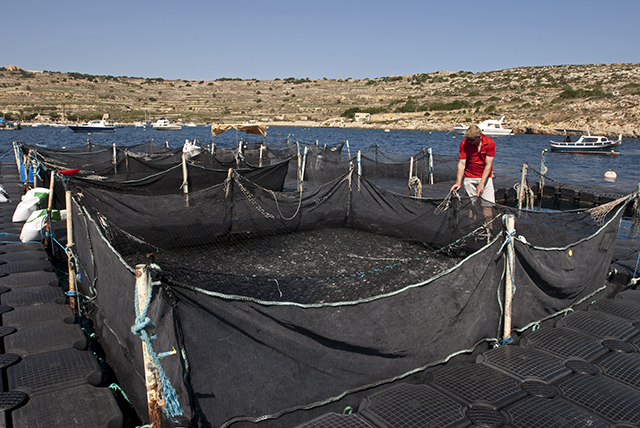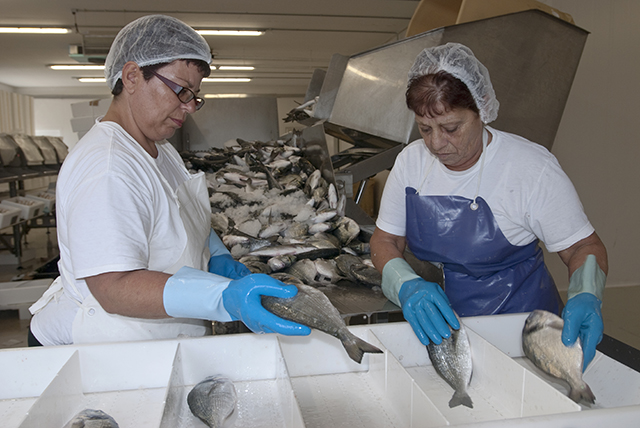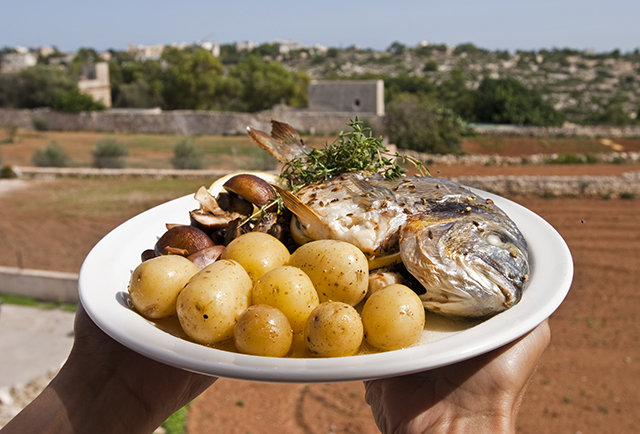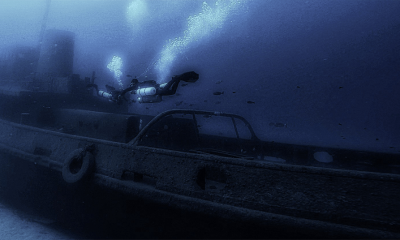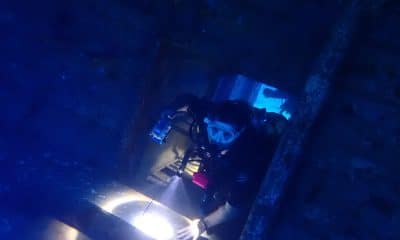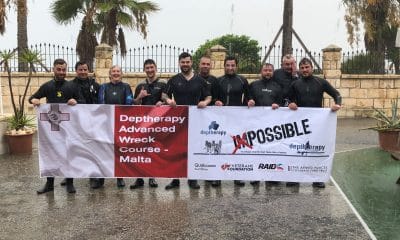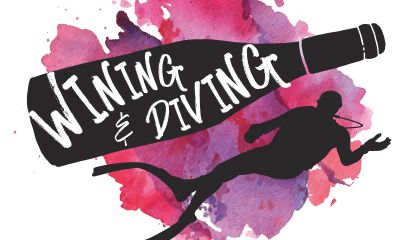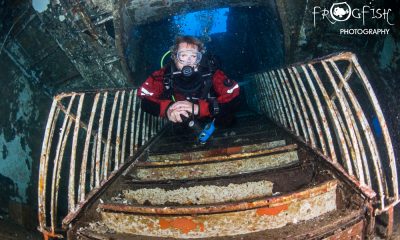News
Aqua Farming: Fish for thought
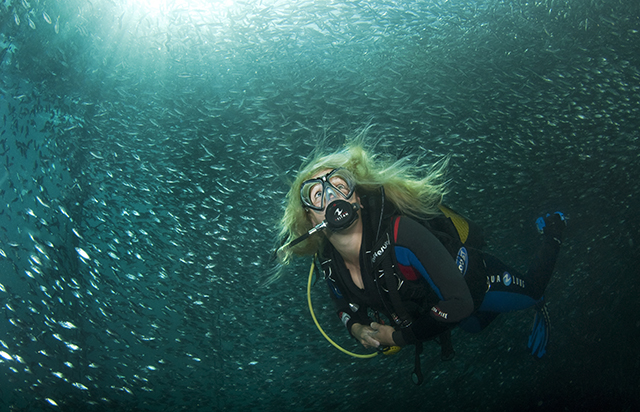
I would love to turn back the clocks and see the underwater world through Jacques Cousteau’s eyes. What an enviable experience – sailing the oceans, exploring pristine reefs thriving with marine life. But alas this is 2015, and as a globe-trotting scuba diver-come-photographer I am acutely aware of the problems facing our planet. Fish provide us with a vital food source but natural stocks are dwindling fast, in some cases so fast that a number of species including tuna are already on the IUCN critically endangered list. I can understand this is a complex situation, especially when there are mouths to feed and livelihoods at stake. Aqua farming may well be a viable solution.
In the quest to learn more I met up with Jes Brinch-Iverson, marine biologist and production manager for Pisciculture Marine De Malte (P2M) Limited. Jes, who has been associated with the company for the past 20 years, agreed to talk to me about the whole ‘farming’ process from its fingerling beginnings right through to serving up on a plate. The Maltese climate (water temp between 14-28 degrees) is ideal for cultivating sea bass (Dicentrarchus labrax), gilt-head sea bream (Sparus aurata) and meagre (Argyrosomus regius). Jes said they are also considering farming amberjacks (Seriola dumerili) sometime in the future.
In all P2M have 19 storage pens at St Pauls Bay and another 5 at Mellieha Bay. Jes said it’s difficult to get permits, especially for the inshore sites. Although the demand for fish farming is increasing there are strict regulations in place dictating depth limitations, environmental issues and proximity to tourism. P2M doesn’t receive any financial help from the Maltese government. Jes said “we do get some European funding for research into new products and improving quality”.
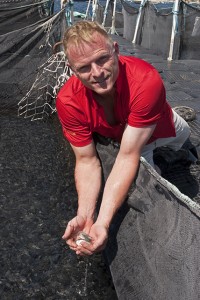 We hopped aboard one of P2M’s work boats and sped across to a cluster of small rectangular shaped pens located just a few hundred metres from the coastline. Jes wanted to show me a new batch of sea bream that had just arrived. The fingerlings or juveniles are supplied by companies from Spain, Italy and France. They are transported in trucks or put on cargo ships in large tanks. Oxygen is pumped into the water and the temperature reduced. This slows down the metabolism of the fish. A standard shipment is around 150,000 fingerlings. During the course of the journey there is about a 1% mortality rate.
We hopped aboard one of P2M’s work boats and sped across to a cluster of small rectangular shaped pens located just a few hundred metres from the coastline. Jes wanted to show me a new batch of sea bream that had just arrived. The fingerlings or juveniles are supplied by companies from Spain, Italy and France. They are transported in trucks or put on cargo ships in large tanks. Oxygen is pumped into the water and the temperature reduced. This slows down the metabolism of the fish. A standard shipment is around 150,000 fingerlings. During the course of the journey there is about a 1% mortality rate.
Jes scooped up a handful of the silvery sea bream fingerlings. He said “only the best quality fish are selected”. The fingerlings are around 100 days old when they arrive at the farm. Each little fish was roughly the size of my little finger and weighed approx 2g. Growth is related to feed and water temperature. Normally the fish are kept inside the holding pens for around 12 – 16 months before harvesting.
The floating pens basically comprise of a large doughnut shaped rubber float with an encompassing net like structure attached below. I watched Jes feeding the hungry hoard. The water surface was literally boiling with activity. The fish are fed twice a day. The fish meal is a mixture of soya, fish oil and vegetable. Proportionately it’s around 50 percent soya. The difference in taste from farmed and naturally wild fish is not significant and the texture is still the same. Jes said “we use high quality feed”. They regularly monitor the health of the fish. Jes said “problems with diseases are very rare. We don’t use any chemicals in the process”. There is also a team of scuba divers on hand to check the nets for holes and do routine maintenance/cleaning tasks. After a particularly bad storm in March 2012 they lost around 8% of the total stock from damaged pens. The local residents had an absolute field day catching all the fish and taking them home for a free bumper supper.
I wanted to try and get some underwater pictures of the farmed fish, so Jes suggested jumping into a 400 cu metre pen which was about 5 metres in diameter and 5 metres deep. The pen was populated with around 100,000 sea bass of sizes between 30 – 40g, which were roughly the length of my hand. Just to make my pictures a little more interesting I invited along local scuba diver Trudy Kerr. This would also add some perspective of size and scale. Both Trudy and Jes were regulars at Maltaqua dive centre based at St Pauls Bay.
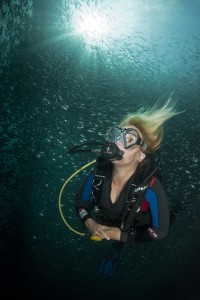
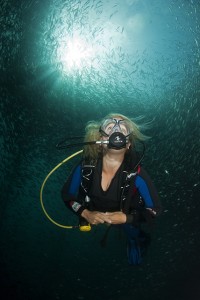 Just before entering the water we encountered a disastrous show stopper of a problem. Trudy’s semi-dry suit zip had stuck open. Unfortunately the zip in question was located right by Trudy’s cleavage. Trudy asked if we should abort the dive. I looked at Jes and he looked back at me. In about 3 micro seconds we made a joint executive decision to soldier on despite this major setback. So the sea bass ended up getting slightly more of an eyeful than expected. No wonder why they were flying around the pen in a complete frenzy! I really enjoyed being inside the pen surrounded by so many fish. I spent more than 45 minutes taking pictures of the swirling shoal. If I have one complaint to make, the fish could have been a tad bigger. Otherwise the visibility wasn’t too bad, there wasn’t too much detritus (fish poo) floating about and the lighting was okay. Trudy’s zip had by that point miraculously repaired itself.
Just before entering the water we encountered a disastrous show stopper of a problem. Trudy’s semi-dry suit zip had stuck open. Unfortunately the zip in question was located right by Trudy’s cleavage. Trudy asked if we should abort the dive. I looked at Jes and he looked back at me. In about 3 micro seconds we made a joint executive decision to soldier on despite this major setback. So the sea bass ended up getting slightly more of an eyeful than expected. No wonder why they were flying around the pen in a complete frenzy! I really enjoyed being inside the pen surrounded by so many fish. I spent more than 45 minutes taking pictures of the swirling shoal. If I have one complaint to make, the fish could have been a tad bigger. Otherwise the visibility wasn’t too bad, there wasn’t too much detritus (fish poo) floating about and the lighting was okay. Trudy’s zip had by that point miraculously repaired itself.
I had noticed quite a few local fishermen dangling rods close to the holding pens but couldn’t quite fathom out why, unless of course some of the fish managed to escaped from time to time. I heard Trudy shouting through her regulator and pointing outside the pen. I followed her line of sight and saw a giant trevally shaped predatory fish circling us. It was absolutely massive (1.5 metres long) and made me wonder what else might be out there beyond the mesh. Now that really was a scary thought… especially with the tuna pens being so close…
When we were safely back on board Jes took us over to one of the offshore pens full of larger sea bass. Jes said the 3,000 cu metre enclosure was around 15 metres in diameter and 12 metres deep. But the visibility was not so good inside this pen and the skittish fish were not so easy to photograph. We found 100’s of sea hares lying on the bottom which kept Trudy occupied for ages. Sea hares are herbivores so there must have been some kind of algae or plant life growing inside the pens that they liked to eat; or was it the fish poo? After 25 frustrating backscatter filled minutes I gave up taking photographs. I noticed there was a handful of dead fish bobbing about on the surface. Jes said this was the normal fall out rate. I’m not sure what had killed them and should have asked the question.
Before returning to the jetty Jes showed me the special harvesting boat. It works just like a giant vacuum cleaner sucking up the fish and passing them through a fast freeze unit. The cold shock instantly kills the fish. Any delay will affect the quality. They are then transferred to the nearby packing and processing plant. P2M had recently moved to new purpose built premises which also included a storage facility and office space. The company is privately owned and presently employs 51 people. Jes took me on a tour around the new plant. They were in the middle of processing a batch of sea bream. I watched the bream being unloaded and sorted onto a conveyor belt. The fish are rinsed, packaged up into boxes (at around 7kg a box) and transferred to ice trucks ready for delivery. I was impressed. The entire process took no more than 45 minutes.
The fish are not gutted and filleted, they are left whole. Jes said that the ideal ‘portion’ size for consumers weighs between 350 and 450g. On the open market prices are around 4 to 5 euro per kg. There are presently 6 fish farms in Malta exporting around 2,000 tons of cultivated fish each year of which a large percentage is shipped to supermarket chains in Italy. Delivery times from the holding pens to the local Maltese restaurants can be just a few hours. International deliveries usually take up to 24 hours. Jes said the fish have a 12-day shelf life.
I had learnt that Aqua farming doesn’t come cheap and there are many costs to consider. P2M do make a profit but fish are deemed an expensive commodity and demand is not so high. Jes said “the supermarkets dictate the prices and make most of the money”. Malta is planning to expand the aqua farming industry over the coming years. In my mind this is great news. More farmed fish means less fish taken from the sea which gives me a better chance of getting some half decent photographs.
Just to round off my day Jes handed me a sea bream sample for taste testing. I had never eaten sea bream before so was really looking forward to checking it out. The fish didn’t take very long to prepare or cook, especially as I wasn’t cooking it! I thought the roasted sea bream had quite a delicate texture and most of the flavour seemed to come from the herbs and the lemon. There were a few bones to contend with, but what did I expect – this was a fish! I would definitely eat it again and a bottle of chilled Gavi is the perfect accompaniment.
What are your views on aqua farming? Let us know in the comments section below.
Blogs
Northern Red Sea Reefs and Wrecks Trip Report, Part 3: The Mighty Thistlegorm
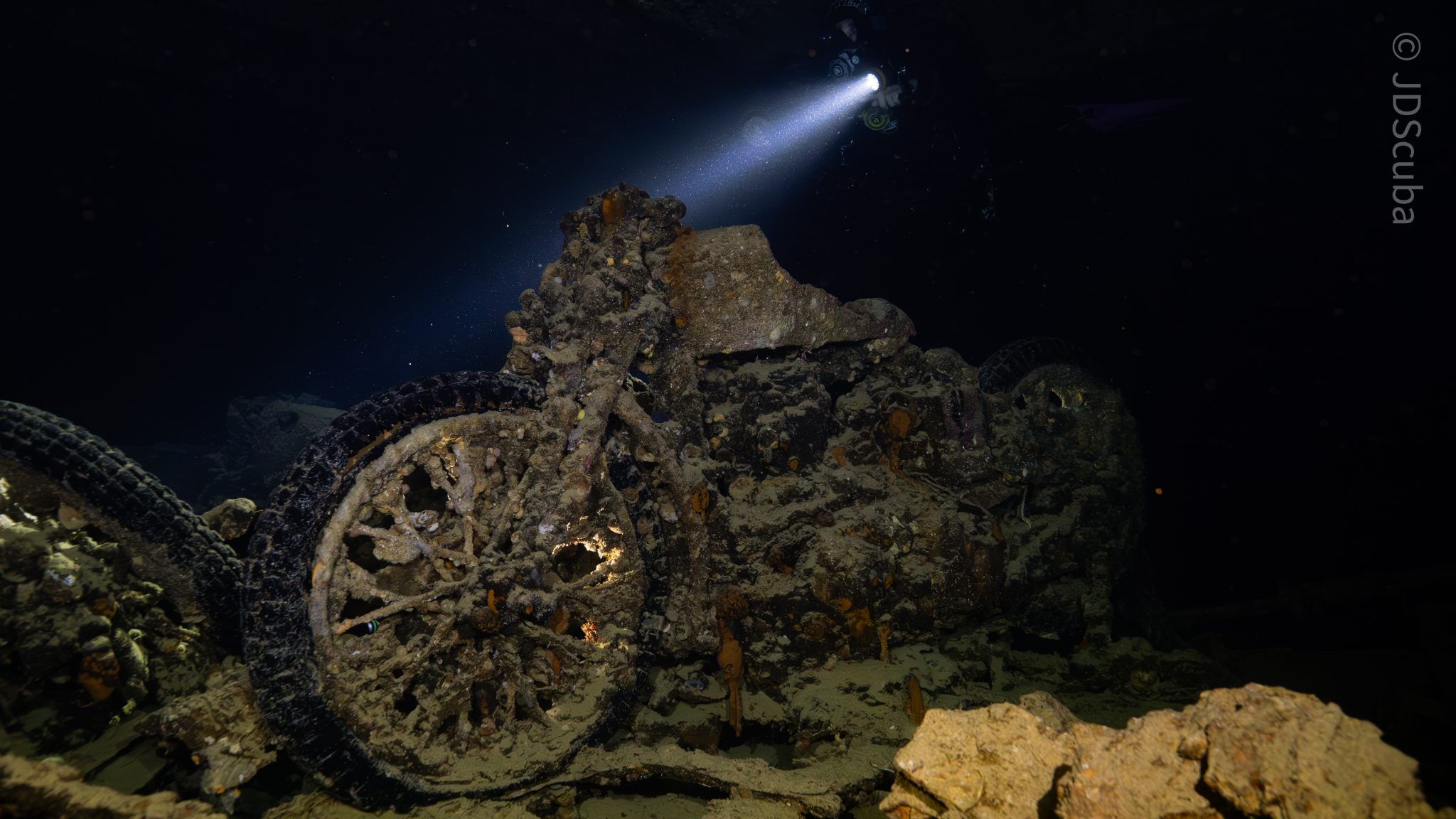
Jake Davies boards Ghazala Explorer for an unforgettable Red Sea diving experience…
Overnight, the wind picked up, making the planned morning dive a bit bumpy on the Zodiacs to the drop point on Thomas Reef. There, we would dive along the reef before descending through the canyon and then passing under the arch before ascending the wall with a gentle drift. The site provided great encounters with more pelagic species, including shoals of large barracuda, tuna, and bigeye trevally.
Once back on the boat, it was time to get everything tied down again as we would head back south. This time, with the wind behind us, heading to Ras Mohammed to dive Jackfish Alley for another great gentle drift wall dive before then heading up the coast towards the Gulf of Suez to moor up at the wreck of the Thistlegorm. This being the highlight wreck dive of the trip and for many onboard, including myself, it was the first time diving this iconic wreck. I had heard so much about the wreck from friends, and globally, this is a must on any diver’s list. Fortunately for us, there was only one other boat at the site, which was a rarity. A great briefing was delivered by Ahmed, who provided a detailed background about the wreck’s history along with all the required safety information as the currents and visibility at the site can be variable.
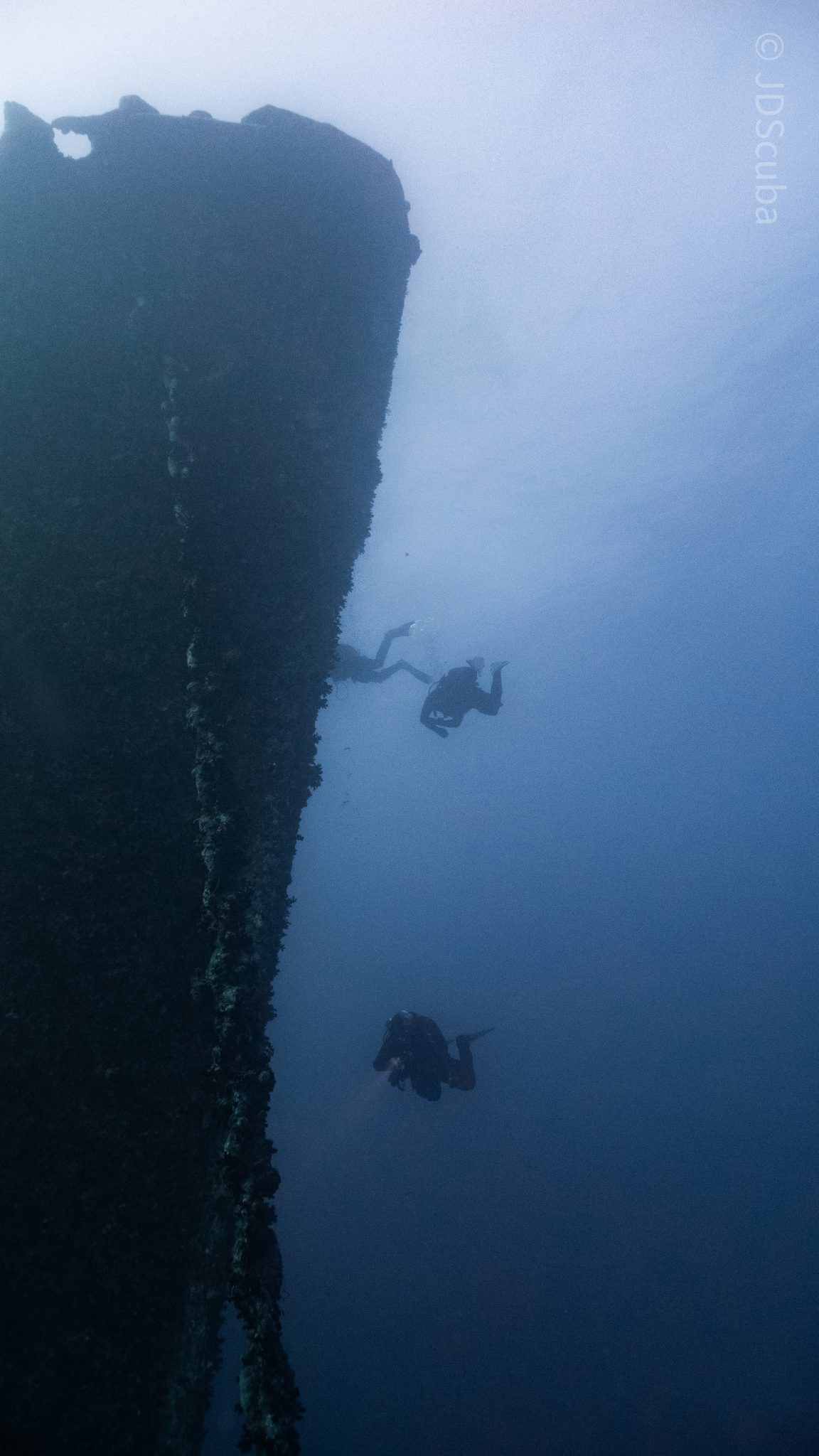
Kitting up, there was a lot of excitement on deck before entering the water and heading down the shoreline. Descending to the wreck, there was a light northerly current which reduced the visibility, making it feel more like the conditions that can be found off the Welsh coast. At 10m from the bottom, the outline of the wreck appeared as we reached the area of the wreck which had been bombed, as our mooring line was attached to part of the propeller shaft. Arriving on deck, instantly everywhere you looked there were many of the supplies which the ship was carrying, including Bren Carrier tanks and projectiles that instantly stood out.
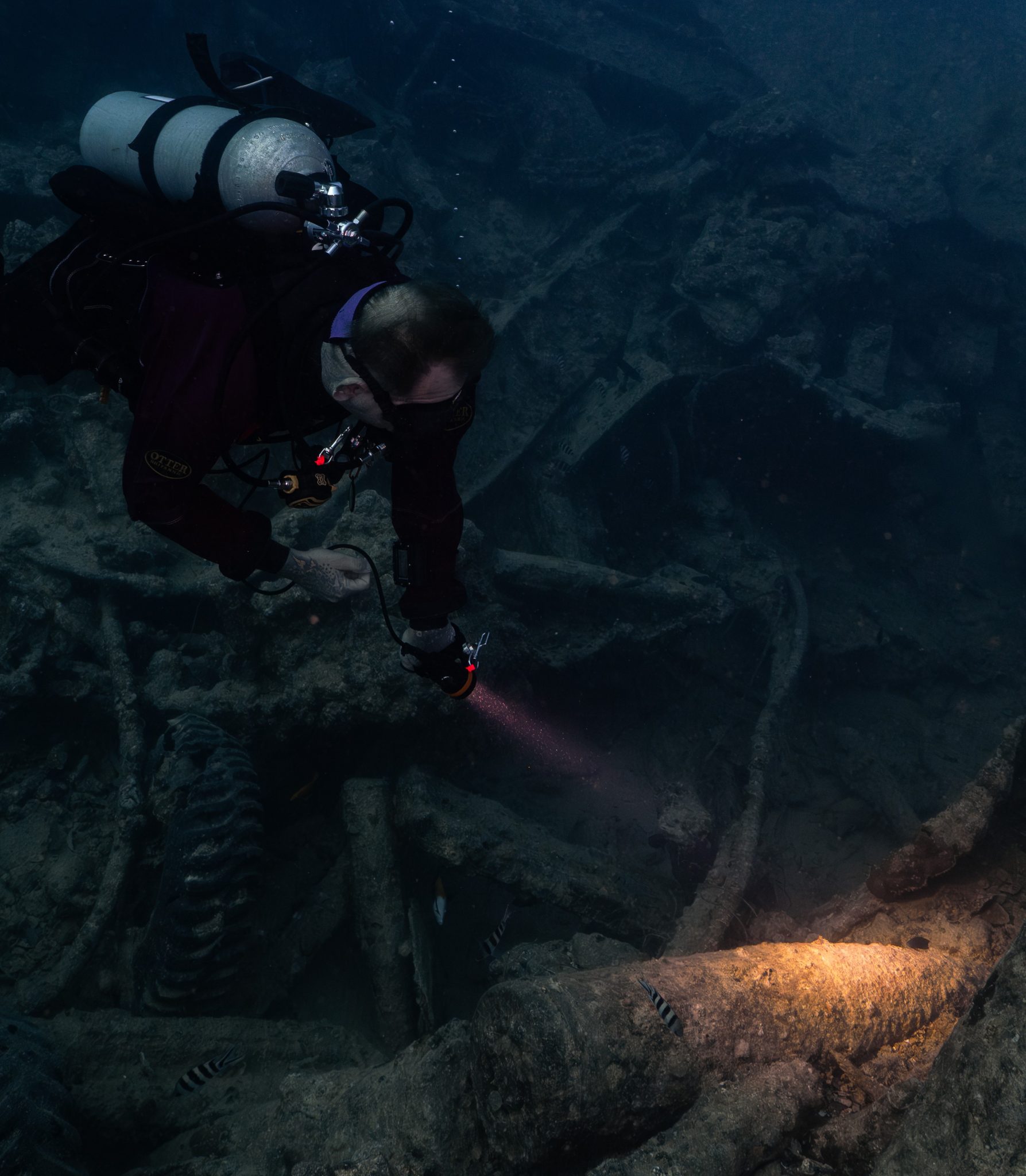
We headed around the exterior, taking a look at the large propeller and guns mounted on deck before entering the wreck on the port side to take a look in the holds. It was incredible to see all the trucks, Norton 16H, and BSA motorcycles still perfectly stacked within, providing a real snapshot in time.
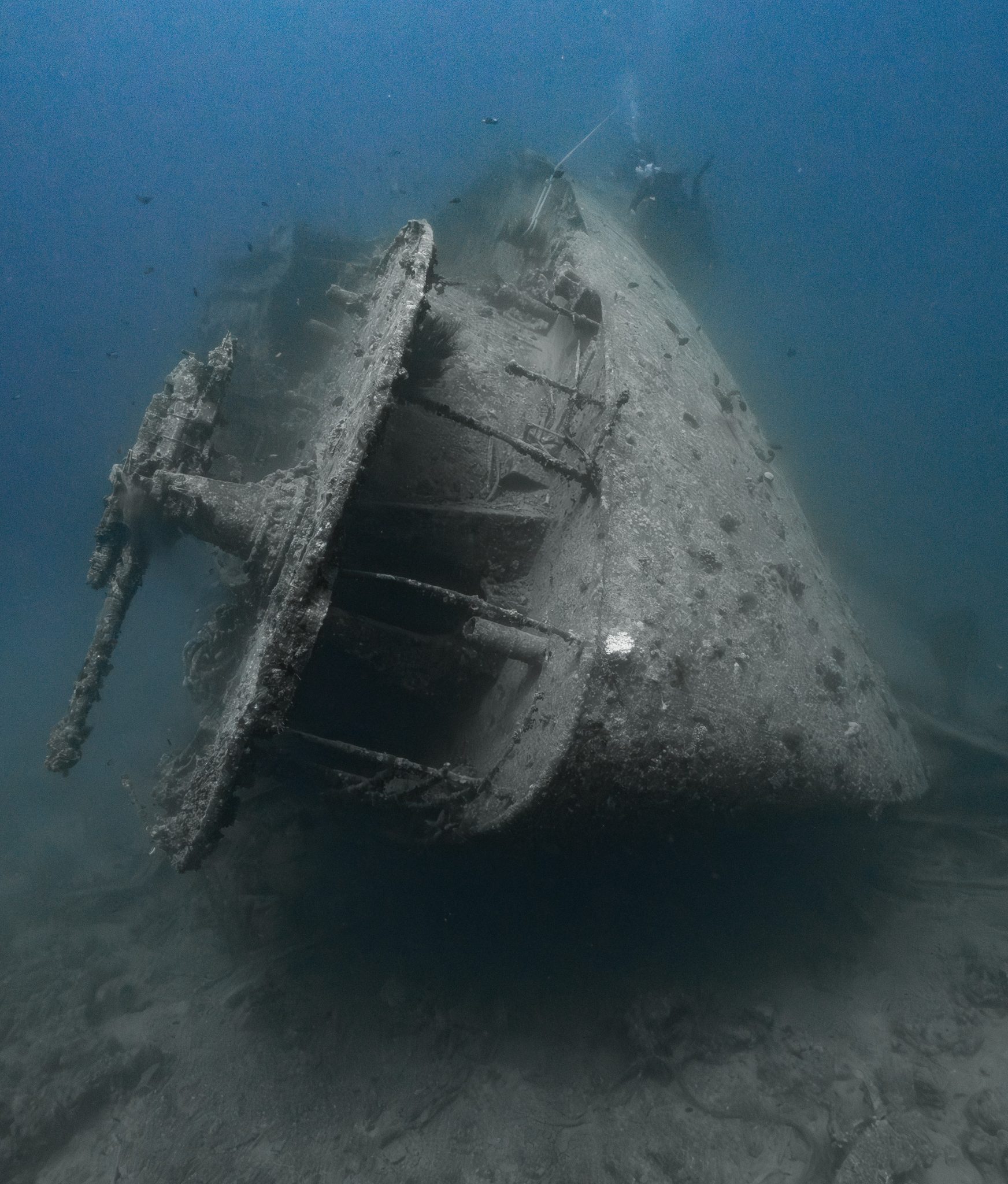
Overall, we had four dives on the Thistlegorm, where for all of the dives we were the only group in the water, and at times, there were just three of us on the whole wreck, which made it even more special, especially knowing that most days the wreck has hundreds of divers. Along with the history of the wreck, there was plenty of marine life on the wreck and around, from big green turtles to batfish, along with shoals of mackerel being hunted by trevally. Some unforgettable dives.
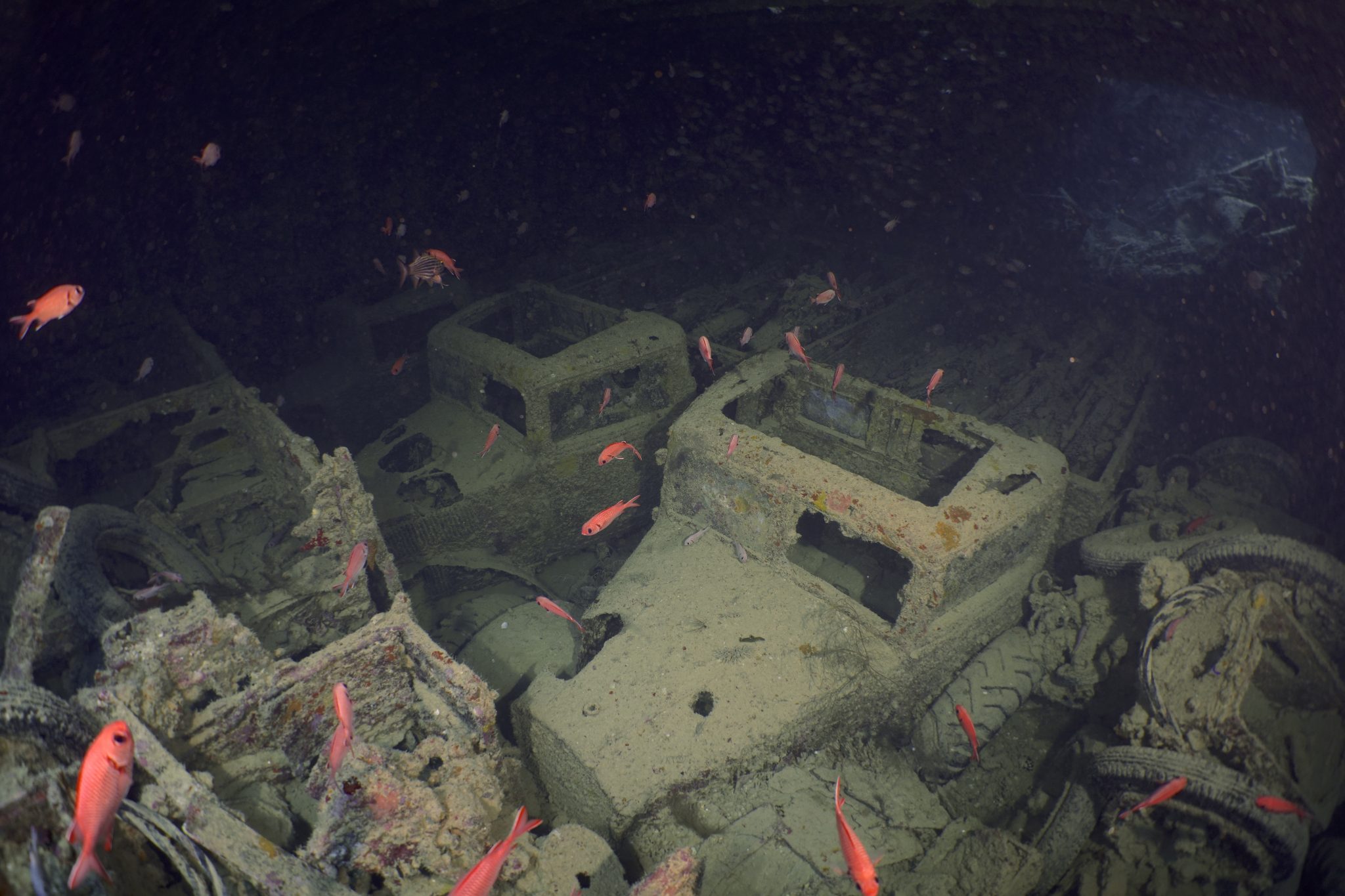
The final leg of the trip saw us cross back over the Suez Canal to the Gobal Islands where we planned to stay the night and do three dives at the Dolphin House for the potential of sharing the dive with dolphins. The site, which included a channel that was teeming with reef fish, especially large numbers of goatfish that swam in large shoals along the edge of the reef. These were nice relaxing dives to end the week. Unfortunately, the dolphins didn’t show up, which was okay as like all marine life they are difficult to predict and you can’t guarantee what’s going to be seen. With the last dive complete, we headed back to port for the final night where it was time to clean all the kit and pack before the departure flight the next day.
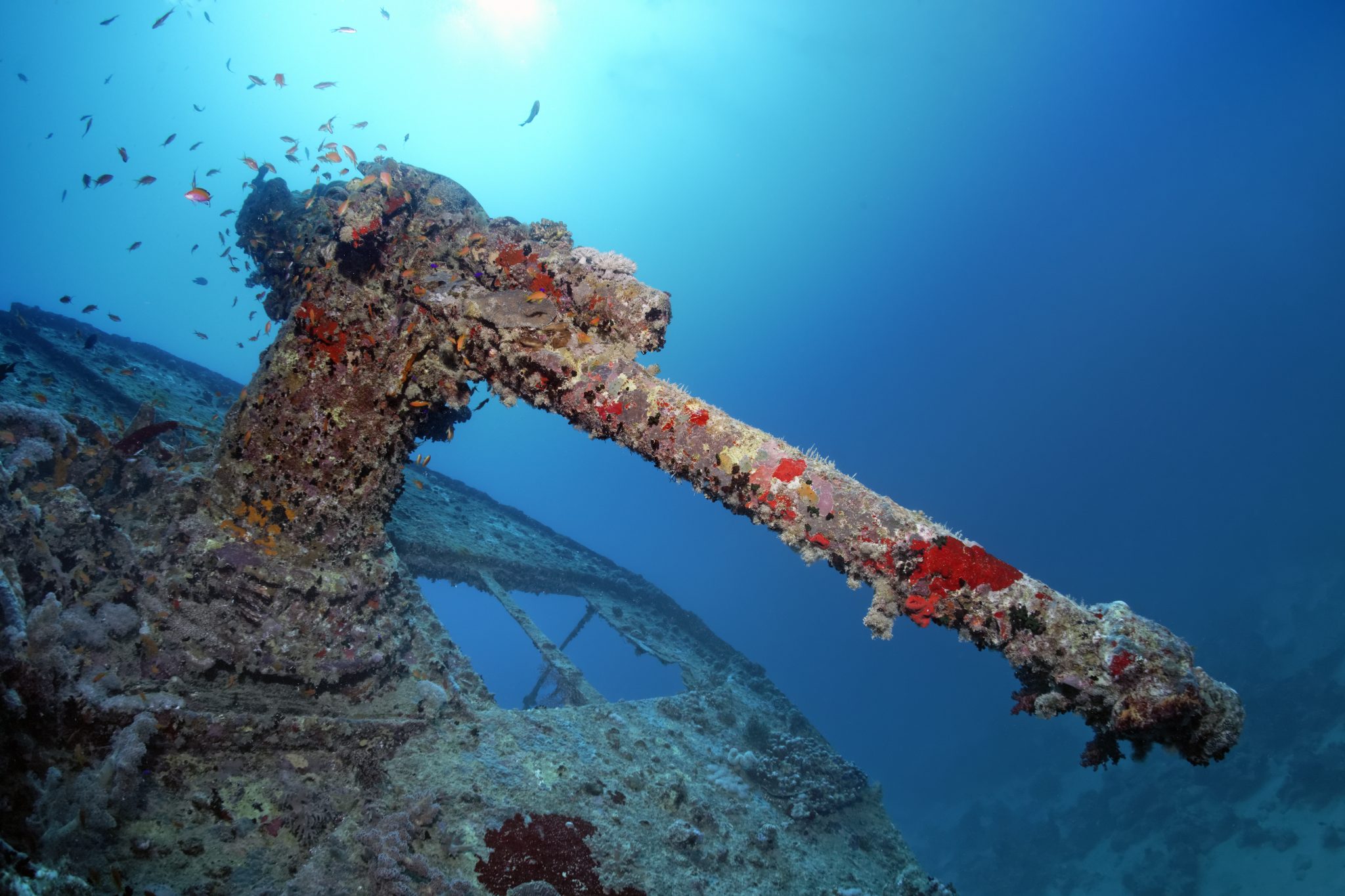
The whole week from start to finish on Ghazala Explorer was amazing; the boat had all the facilities you need for a comfortable week aboard. The crew were always there to help throughout the day and the chefs providing top quality food which was required after every dive. The itinerary providing some of the best diving with a nice mixture of wreck and reef dives. I would recommend the trip to anyone, whether it’s your first Red Sea liveaboard in the Red Sea or you’re revisiting. Hopefully, it’s not too long before I head back to explore more of the Red Sea onboard Ghazala Explorer.
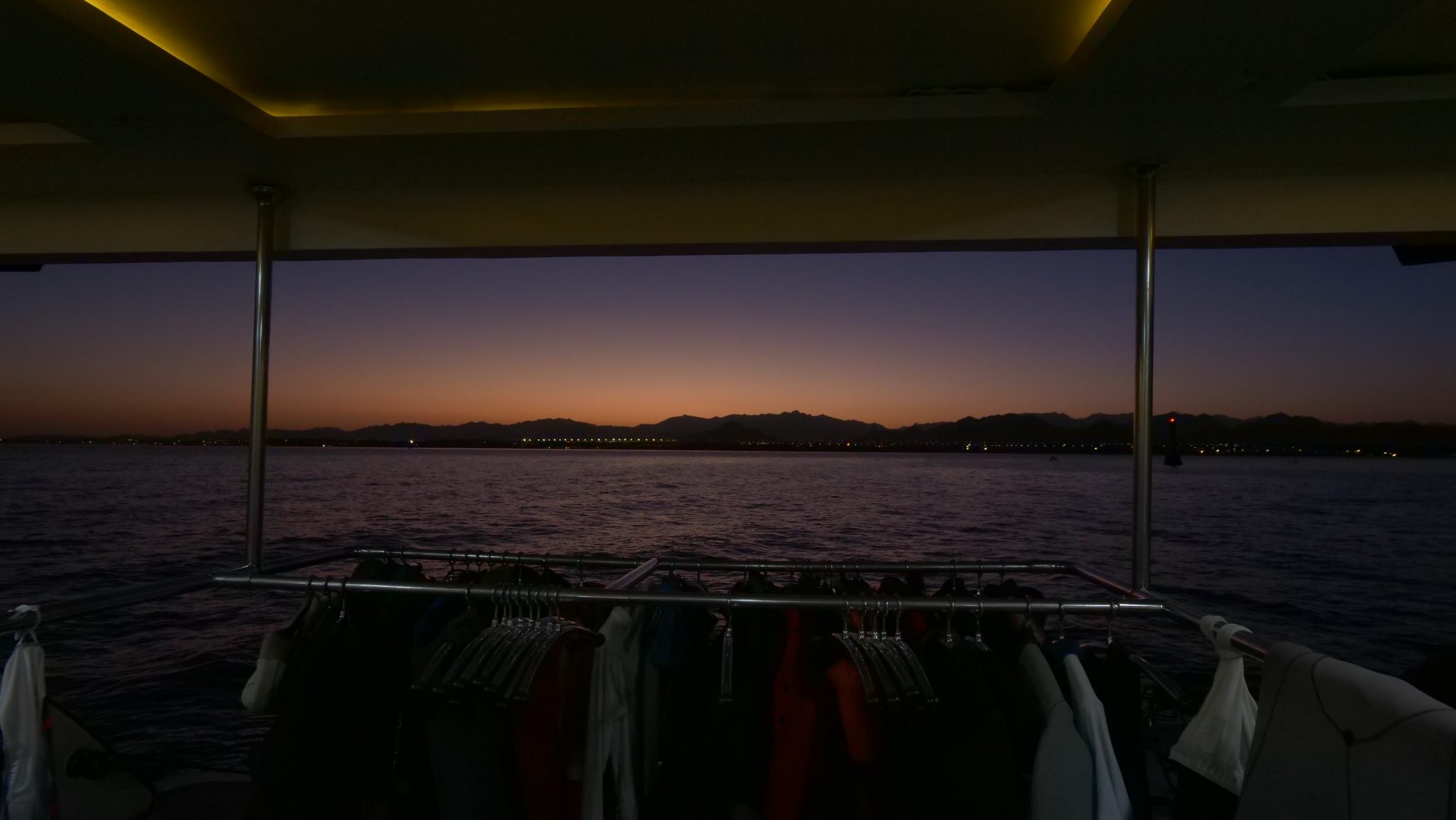
To find out more about the Northern Red Sea reef and wrecks itineraries aboard Ghazala Explorer, or to book, contact Scuba Travel now:
Email: dive@scubatravel.com
Tel: +44 (0)1483 411590
Photos: Jake Davies / Avalon.Red
Blogs
Northern Red Sea Reefs and Wrecks Trip Report, Part 2: Wall to Wall Wrecks
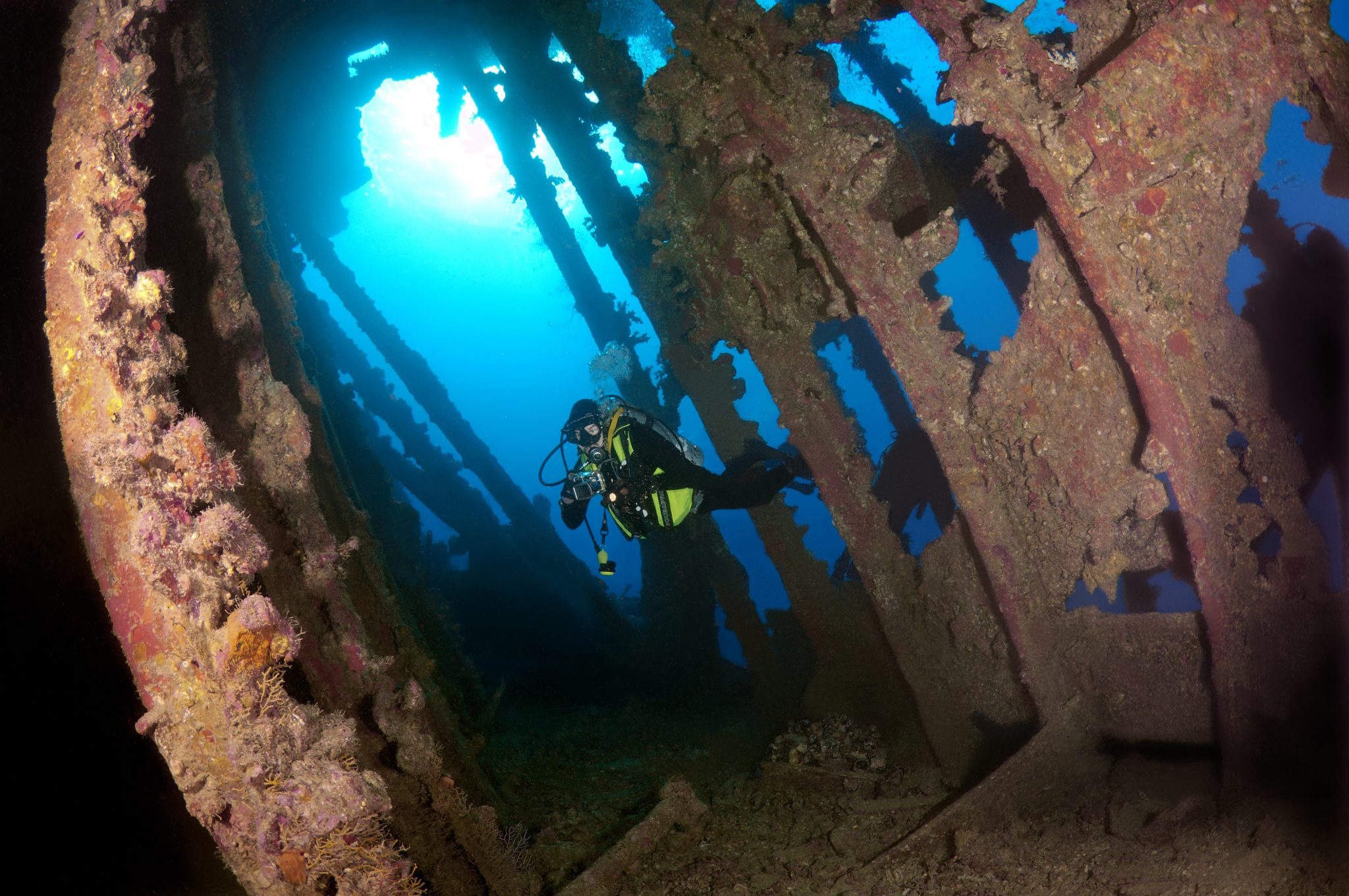
Jake Davies boards Ghazala Explorer for an unforgettable Red Sea diving experience…
The second day’s diving was a day full of wreck diving at Abu Nuhas, which included the Chrisoula K, Carnatic, and Ghiannis D. The first dive of the day was onto the Chrisoula K, also known as the wreck of tiles. The 98m vessel remains largely intact where she was loaded with tiles which can be seen throughout the hold. The stern sits at 26m and the bow just below the surface. One of the highlights of the wreck is heading inside and seeing the workroom where the machinery used for cutting the tiles are perfectly intact. The bow provided some relaxing scenery as the bright sunlight highlighted the colours of the soft coral reef and the many reef fish.
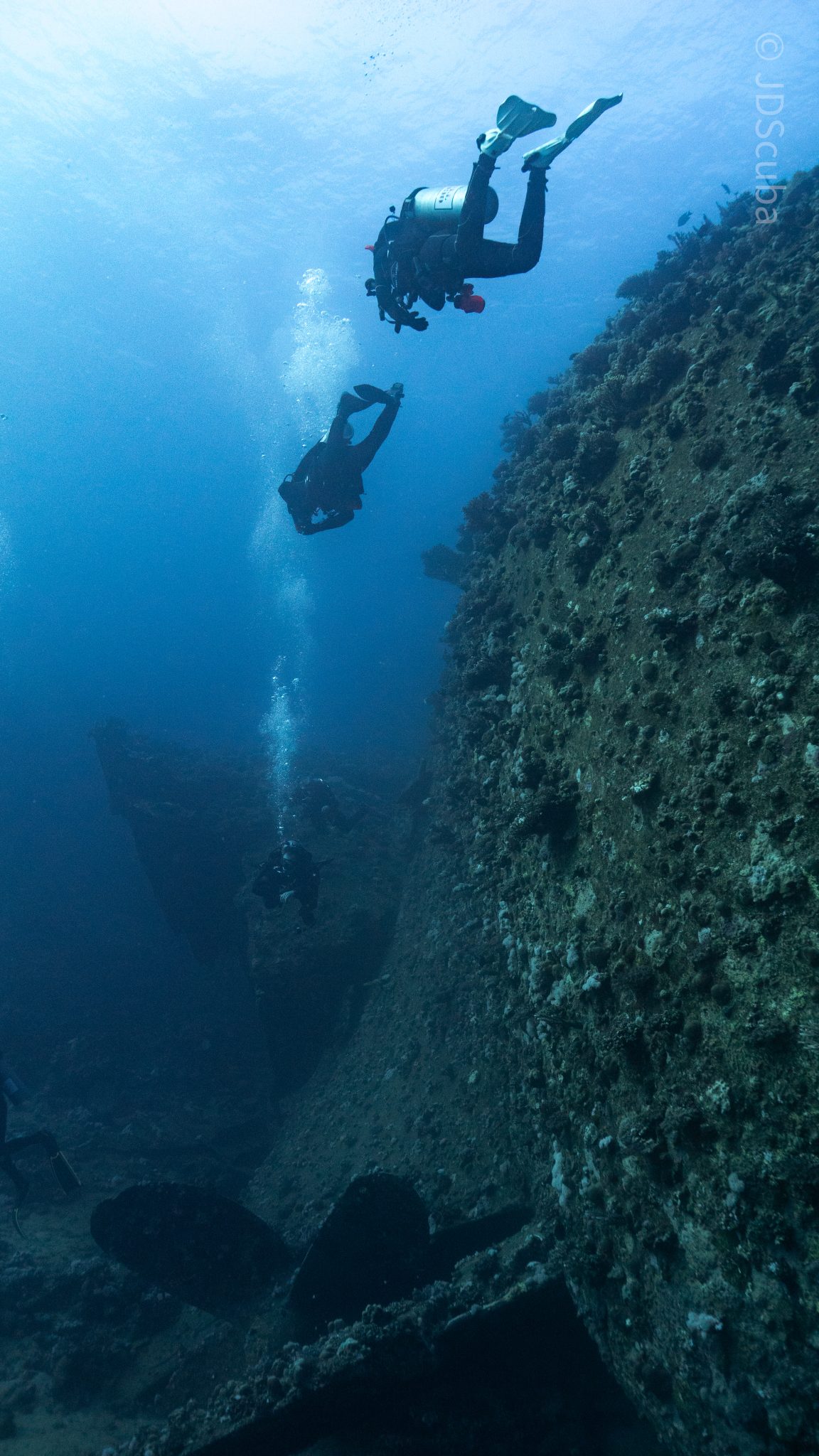
Following breakfast, we then headed to the next wreck, which was the Carnatic. The Carnatic is an 89.9m sail steamer vessel that was built in Britain back in 1862. She ran aground on the reef back in 1869 and remains at 27m. At the time, she was carrying a range of items, including 40,000 sterling in gold. An impressive wreck where much of the superstructure remains, and the two large masts lay on the seafloor. The wooden ribs of the hull provide structures for lots of soft corals, and into the stern section, the light beams through, bouncing off the large shoals of glass fish that can be found using the structure as shelter from the larger predators that are found outside of the wreck.
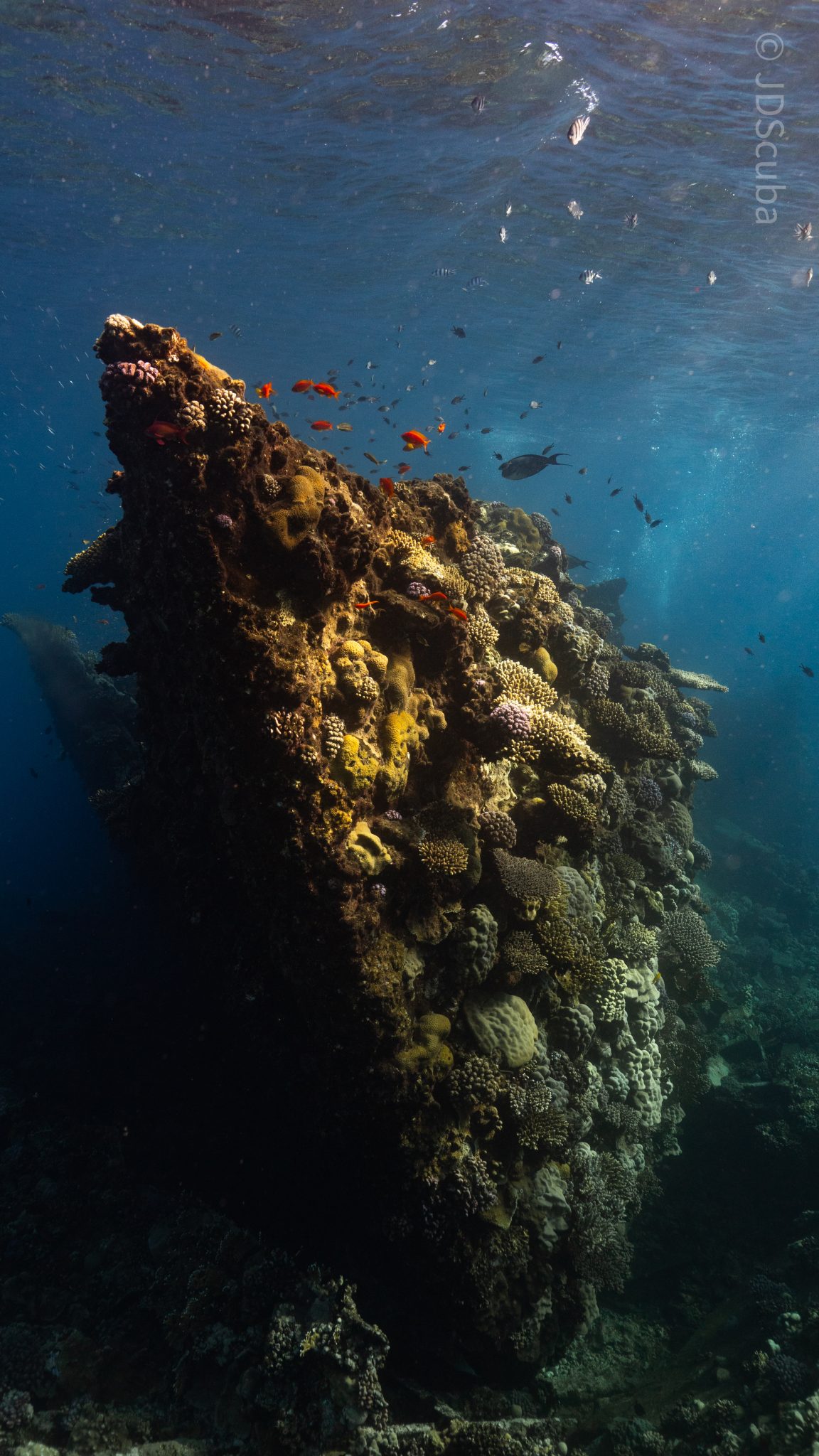
The final wreck at Abu Nuhas was the Ghiannis D, originally called ‘Shoyo Maru,’ which was 99.5m long and built in Japan back in 1969 before becoming a Greek-registered cargo ship in 1980. The ship then ran aground on the reef on April 19th, 1983, and now sits at the bottom at a depth of 27m. Heading down the line, the stern of the ship remains in good condition compared to the rest of the hull. The highlight of the wreck, though, is heading into the stern section and down the flights of stairs to enter the engine room, which remains in good condition and is definitely worth exploring. After exploring the interior section of the ship, we then headed over to see the rest of the superstructure, where it’s particularly interesting to see the large table corals that have grown at the bow relatively quickly considering the date the ship sank. After surfacing and enjoying some afternoon snacks, we made sure everything was strapped down and secured as we would be heading north and crossing the Gulf of Suez, where the winds were still creating plenty of chop.
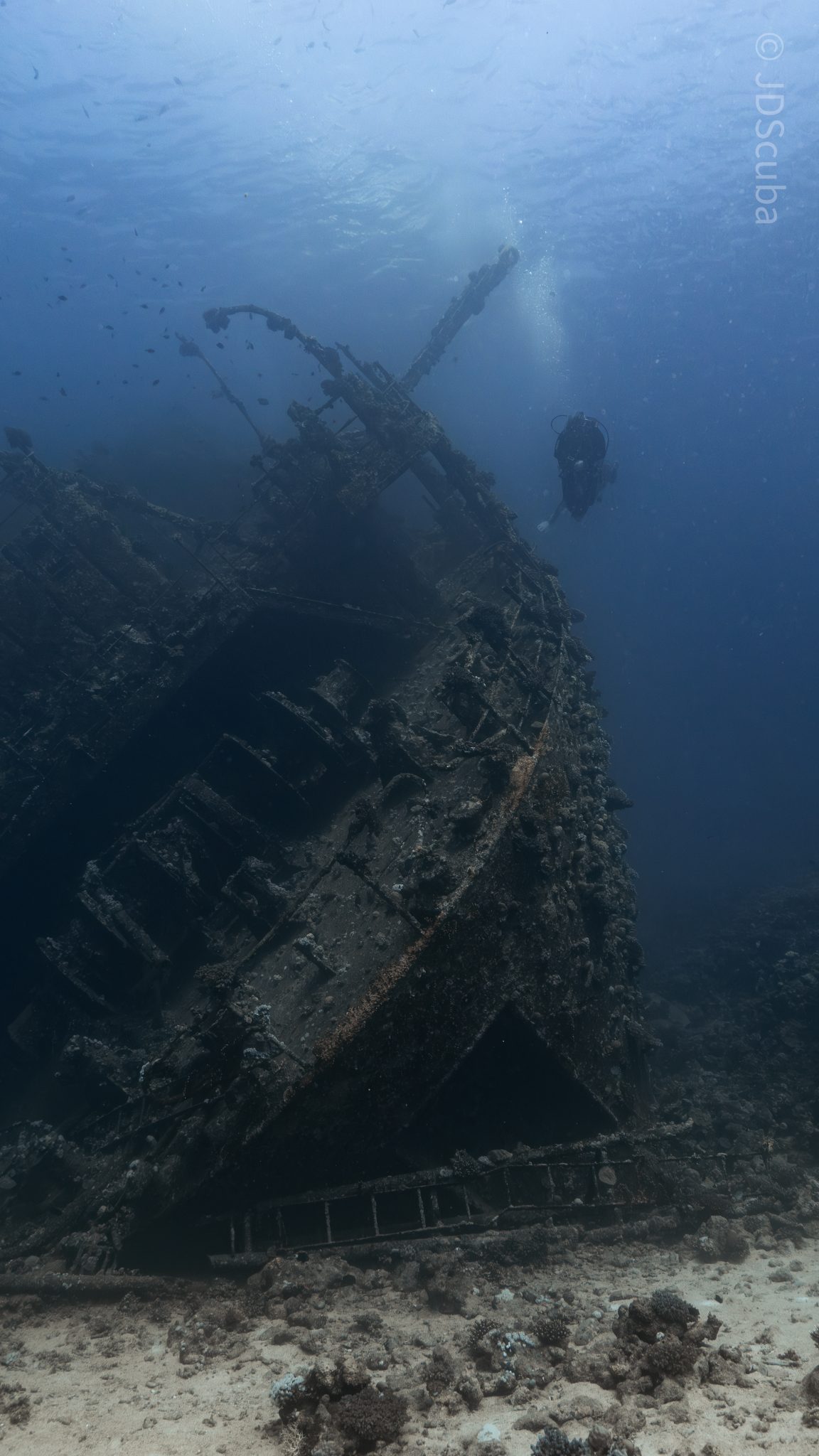
The next morning, it was a short hop to Ras Mohammed Nature Reserve for the next couple of days of diving. The 6am wake-up call came along with the briefing for the first site we would be diving, which was Shark & Yolanda. The low current conditions allowed us to start the dive at Anemone City, where we would drift along the steep, coral-filled wall. These dives involved drifts, as mooring in Ras Mohammed wasn’t allowed to protect the reefs. As a dive site, Shark & Yolanda is well-known and historically had a lot of sharks, but unfortunately not so many in recent years, especially not so early in the season. However, there was always a chance when looking out into the blue.
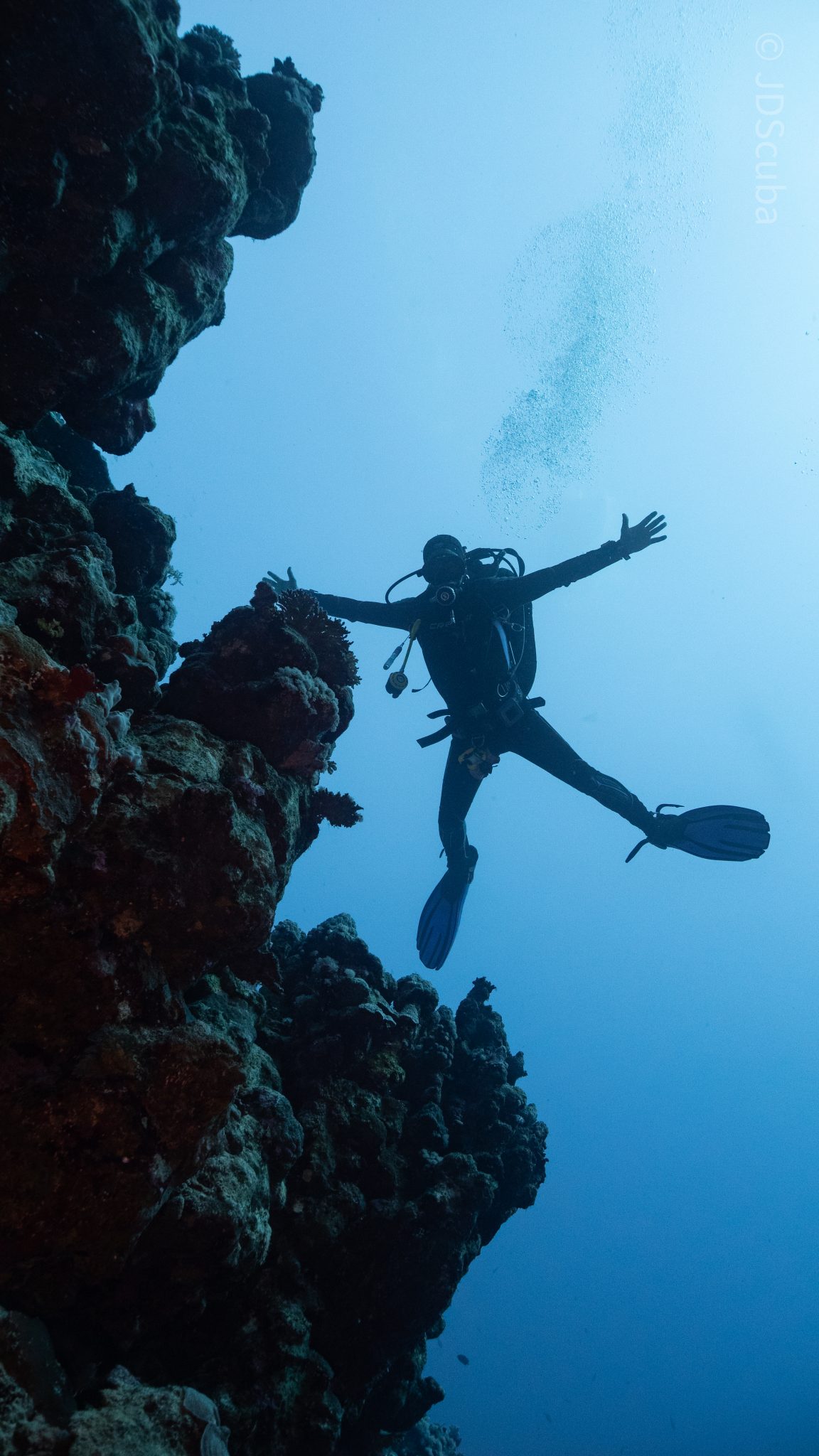
The gentle drift took us along the steep walls of the site, with plenty of anemone fish to be seen and a huge variety of corals. It wasn’t long into the dive before we were accompanied by a hawksbill turtle, who drifted with us between the two atolls before parting ways. Between the two reefs, the shallow patch with parts of coral heads surrounded by sand provided the chance to see a few blue-spotted stingrays that were mainly resting underneath the corals and are always a pleasure to see. With this being the morning dive, the early sunlight lit up the walls, providing tranquil moments. Looking out into the blue, there was very little to be seen, but a small shoal of batfish shimmering underneath the sunlight was a moment to capture as we watched them swim by as they watched us.
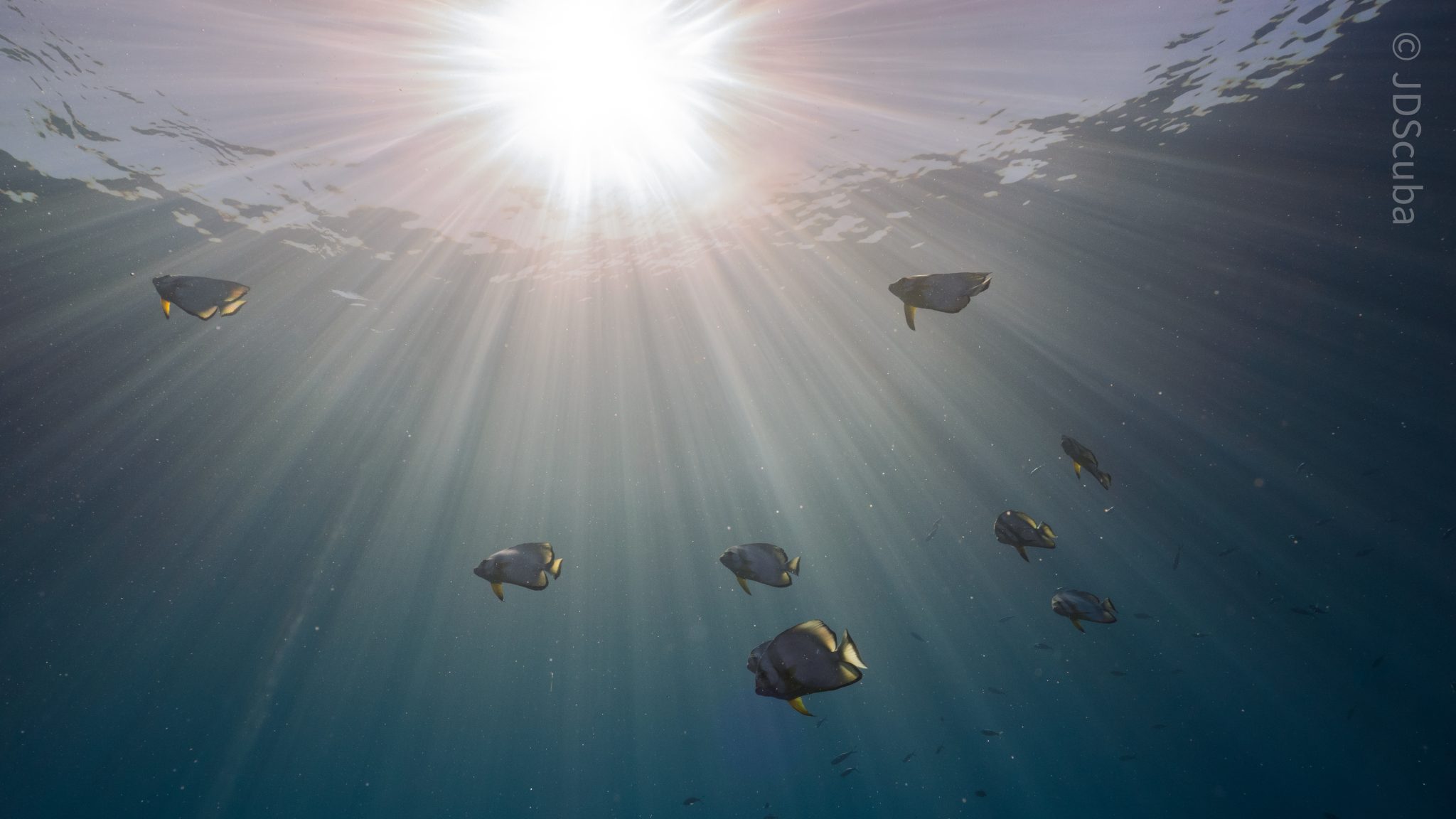
Towards the end of the dive, we stopped at the wreck of the Jolanda where the seafloor was scattered with toilets from the containers it was carrying. This provided a unique site to make a safety stop, which was also accompanied by a large barracuda slowly swimming by, along with a hawksbill turtle calmly swimming over the reef as the sun rays danced in the distance.
For the next dive, we headed north to the Strait of Tiran to explore the reefs situated between Tiran Island and Sharm El Sheik, which were named after the British divers who had found them. We started on Jackson before heading to Gordons Reef, where we also did the night dive. All the atolls at these sites provided stunning, bustling coral reefs close to the surface and steep walls to swim along, which always provided the opportunity to keep an eye out for some of the larger species that can be seen in the blue. Midwater around Jackson Reef was filled with red-toothed triggerfish and shoals of banner fish, which at times were so dense that you couldn’t see into the blue. Moments went by peacefully as we enjoyed the slow drift above the reef, watching these shoals swim around under the mid-afternoon sun.
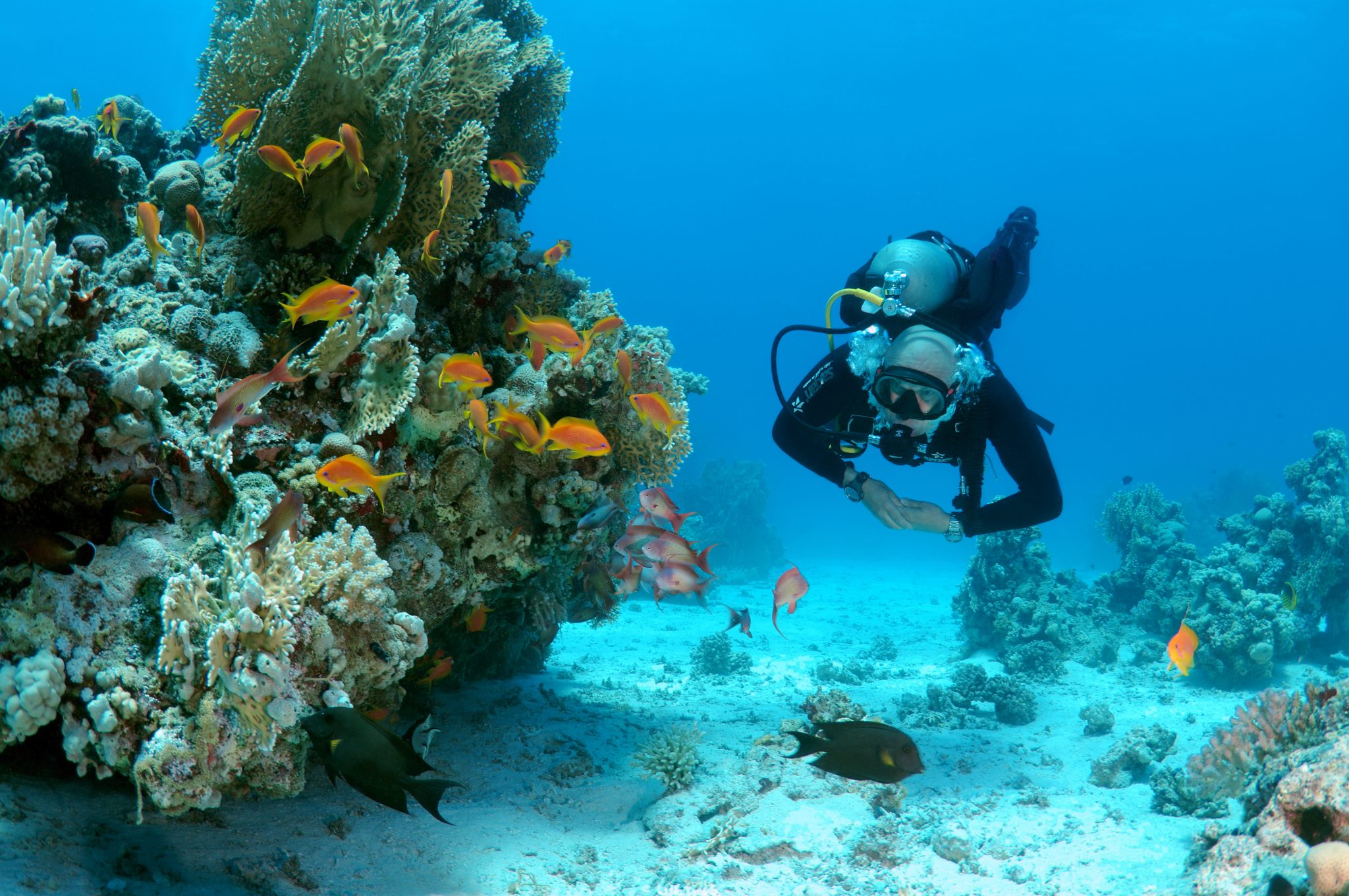
The night dive at Gordon’s Reef was mainly among the stacks of corals surrounded by sand, which was great to explore under the darkness. After some time circling the corals, we came across what we were really hoping to find, and that was an octopus hunting on the reef. We spent the majority of the dive just watching it crawl among the reef, blending into its changing surroundings through changes in colour and skin texture. It’s always so fascinating and captivating to watch these incredibly intelligent animals, in awe of their ability to carry out these physical changes to perfectly blend into the reef. Before we knew it, it was time to head back to the boat to enjoy a well-deserved tasty dinner prepared by the talented chefs onboard.
Check in for the 3rd and final part of this series from Jake tomorrow!
To find out more about the Northern Red Sea reef and wrecks itineraries aboard Ghazala Explorer, or to book, contact Scuba Travel now:
Email: dive@scubatravel.com
Tel: +44 (0)1483 411590
Photos: Jake Davies / Avalon.Red
-
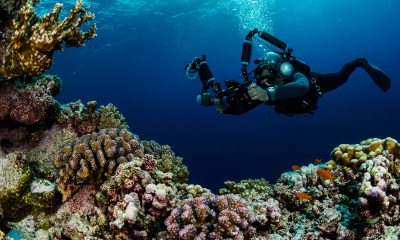
 News3 months ago
News3 months agoHone your underwater photography skills with Alphamarine Photography at Red Sea Diving Safari in March
-
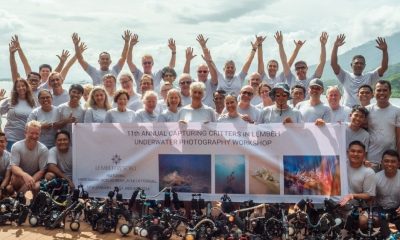
 News3 months ago
News3 months agoCapturing Critters in Lembeh Underwater Photography Workshop 2024: Event Roundup
-
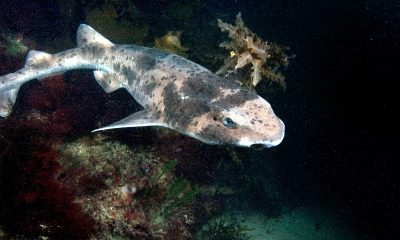
 Marine Life & Conservation Blogs2 months ago
Marine Life & Conservation Blogs2 months agoCreature Feature: Swell Sharks
-
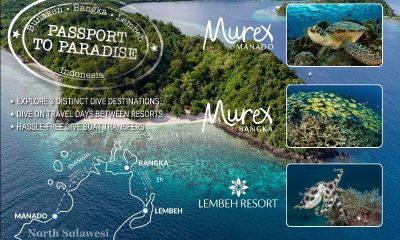
 Blogs2 months ago
Blogs2 months agoMurex Resorts: Passport to Paradise!
-
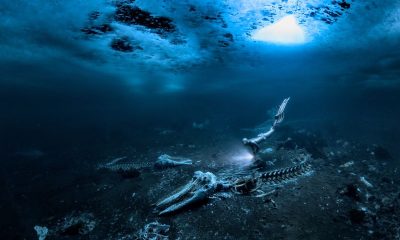
 Blogs2 months ago
Blogs2 months agoDiver Discovering Whale Skeletons Beneath Ice Judged World’s Best Underwater Photograph
-
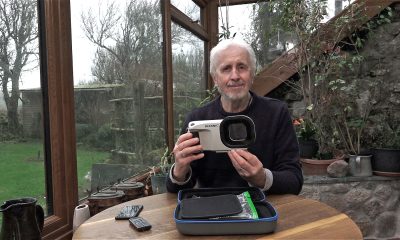
 Gear Reviews3 months ago
Gear Reviews3 months agoGear Review: Oceanic+ Dive Housing for iPhone
-
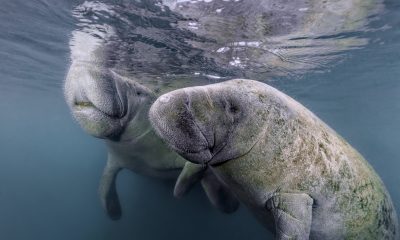
 Marine Life & Conservation2 months ago
Marine Life & Conservation2 months agoSave the Manatee Club launches brand new webcams at Silver Springs State Park, Florida
-
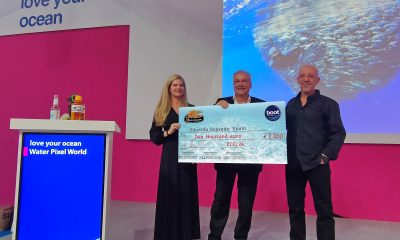
 News3 months ago
News3 months agoWorld’s Best Underwater Photographers Unveil Breathtaking Images at World Shootout 2023


